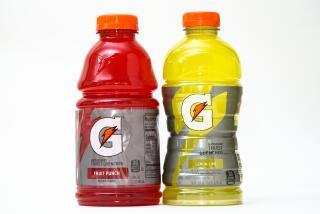Xerox Offers Firms a Lesson Worth Copying
- Share via
The word on trade is keep the faith. Understandably, that is hard to do when the value of the U.S. dollar against the Japanese yen keeps falling--it hit an all-time low in Tokyo on Monday--and the trade deficit with Japan keeps rising. But if U.S. industry is any good at all it will be able before long to take advantage of this currency shift to redress the trade balance.
Why hasn’t it done so already? Because competitiveness depends on more than currency exchange rates. It’s pretty clear that Japanese producers of cars, telephones, bulldozers and office copiers did not raise their prices to anywhere near the full extent of last year’s 38% shift in the yen’s value relative to the dollar. (To illustrate: If it costs 2 million yen to build a car in Japan, the cost of that car in dollars was $8,300 in 1985 when 240 yen equaled $1, but last year the same 2-million-yen car was worth $12,500 in dollars, as the yen rose to 160 to $1). By not hiking their prices to reflect the change in currency, the Japanese companies were choosing to absorb some of the impact in lower profits. Why? Because they decided that it was more important to preserve their shares of the U.S. market than to maintain current profits.
The fact that they appear to have succeeded, however, suggests something else. It indicates that many U.S. companies didn’t press their advantage by trying to retake market share from Japanese competitors. With their opponent on the ropes, the U.S. companies didn’t cut prices on their products in order to maximize the competitive pressure at the crucial moment.
Gained Market Share
But not all American companies. Xerox isn’t talking about market shares or pricing strategies, but evidence is mounting that the Stamford, Conn.-based maker of office copiers gained market share from its Japanese competitors Canon and Ricoh last year. And the shift in currencies gave Xerox a large helping hand in doing so.
But Xerox was prepared to take advantage. The company has been working furiously for most of this decade to regain the No. 1 position in the $28-billion (sales) world copier industry, a position it established when it invented the modern copier industry in the 1950s and which it lost through wrong-headed corporate policies in the 1970s.
For a long time Xerox was an example of what can happen when a fine company falls asleep at the switch. Starting in the 1960s the Japanese copier makers Canon, Ricoh and Minolta came into the U.S. market with simple, small machines that sold at lower prices than the sophisticated Xerox copiers. Mighty Xerox didn’t see any profit in competing for such cut-price business, so it let Canon and the others establish a beachhead.
Battle With Xerox
But then, their research budgets fattened by the dollar profits they were making in the United States, the Japanese companies began to produce more sophisticated, higher-priced copiers. They began to nip at Xerox dominance in the middle price ranges--copiers costing $4,000 to $8,000. Xerox still held the market for big copier-duplicators selling for $30,000 and more, but its market share was being eroded and eventually it fell behind Ricoh in worldwide copier sales.
Then Xerox reacted. Starting in the early 1980s, it resolved to retake industry leadership from the Japanese copier makers. To do so it developed a cost-efficient line of machines called the Series 10 and began to meet the competition’s pricing in markets ranging down to $2,000 per copier. And it stopped Canon and Ricoh’s advance in the middle market.
The fight wasn’t easy on Xerox’s bottom line. Partly because it was enduring low margins, profits in Xerox’s $7-billion (sales) copier business slid 40% in 1982 and stayed low through last year. But Xerox persisted.
And last year it got the benefit of the currency shift. Canon and Ricoh were having a hard time meeting Xerox prices for the Series 10 before 1986; now they are cutting profits or even losing money to do so. Moreover, their troubles are long term: As their profits decline, so inevitably will their research budgets. Their only hope is that the yen-dollar exchange rates will reverse, which is doubtful, or that Xerox will ease up, which is out of the question. With its opponents on the ropes, Xerox plans to cut prices in 1987 and go for a knockout. It should retake world leadership from Ricoh this year or next.
There are lessons aplenty for U.S. industry in Xerox’s example. One is never make it easy for your competitors. But another is that a determined policy of full speed ahead and devil take the bottom line can pay off. The recovery of Xerox copier profits is only a matter of time as it increases sales on a tightened cost base. And exchange rates can be a big help, too--but only to companies that help themselves.
More to Read
Inside the business of entertainment
The Wide Shot brings you news, analysis and insights on everything from streaming wars to production — and what it all means for the future.
You may occasionally receive promotional content from the Los Angeles Times.









